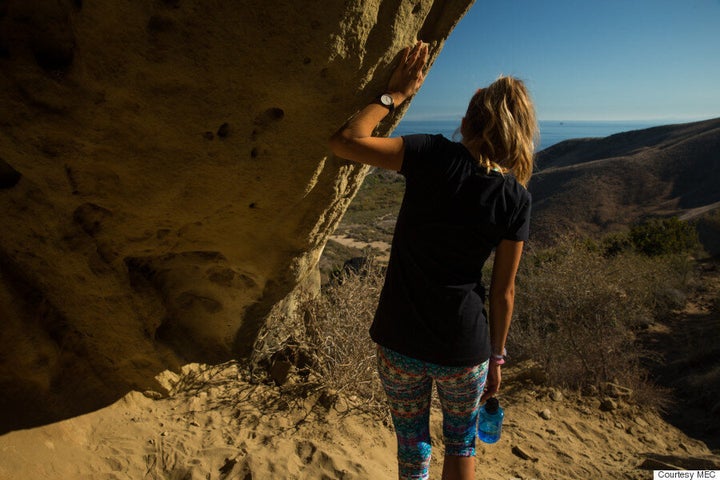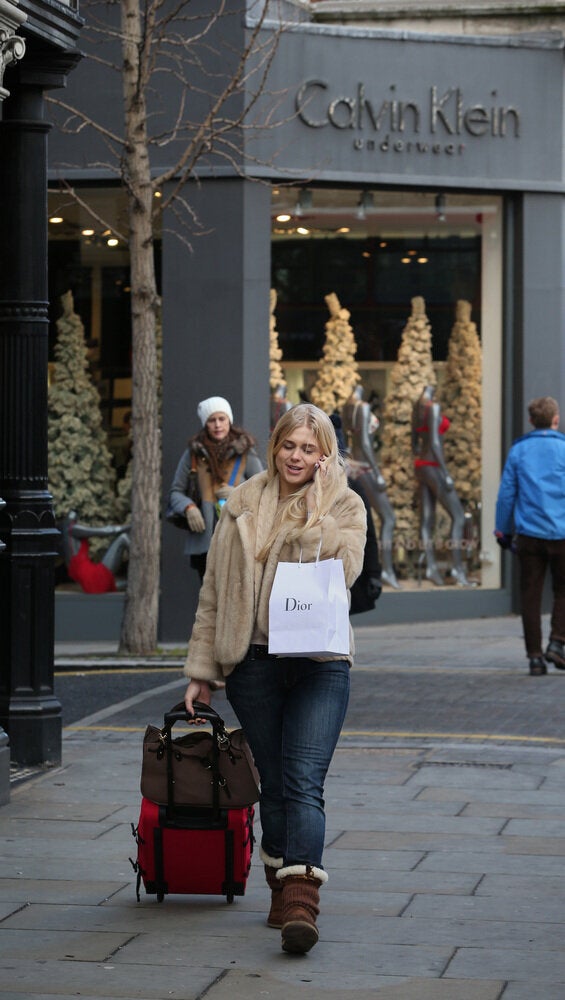We are a month shy of the three-year anniversary of the collapse of the Rana Plaza factories in Bangladesh.
On April 24, 2013, the fashion industry was shaken awake to the harsh realities of society’s cheap clothing addiction. The factories, filled to the brim with workers sewing everything from Joe Fresh to Walmart, weren’t brought down by a bomb or an earthquake — it was poor structural integrity augmented by greedy management and horrifically unsafe working conditions. Rana Plaza will be remembered as the worst garment-factory accident in history, with a death toll of 1,134 and hundreds more were injured.

Rescue workers and volunteers remove clothing garments from the building as they search for victims amongst the collapsed Rana Plaza building in Dhaka, Bangladesh, on April 26, 2013.
Almost three years later, fast fashion continues to fly off the shelves.
As topics like women’s equality and feminism simmer across blogs and the popular zeitgeist, workers’ rights are often ignored. Fact is, 80 per cent of the world’s garment workers are women, who must contend with low wages, unstable employment and Rana Plaza-like conditions daily.
But what can we do? When nearly every label says, "MADE IN [insert Southeast Asian country here]," it can be overwhelming for consumers to shop consciously. Sure, things can be made with sustainable materials, but how can one ensure that the factory workers are being treated not only fairly, but with dignity? Enter Fair Trade USA.
Fair Trade USA is the leading third party certifier of fair trade goods in North America. While you probably associate the 17-year-old San Fransisco-based company with their first initiative, coffee, they have since expanded into 30 categories including apparel and home goods.
There are currently only two Canadian apparel brands who are certified by them, MEC and Oliberté (the world’s first fair trade shoe company), though we do have access to well-known foreign-owned Fair Trade-certified products including Patagonia, Prana and West Elm.
Maya Spaull, Fair Trade USA’s Director of Apparel and Home Goods, explains in a phone interview with HuffPost Canada Style, "When you buy a Fair Trade Certified (FTC) product or when a fashion company put a FTC product out on the market, it’s a consumer guarantee that the product is traded in a more ethical way. What that means is safe working conditions, better lively hood and protection for the environment."
Fair Trade USA holds suppliers that companies buy from to a standard based on a 300-point compliance list ensuring safety in the workplace, the structure and conditions of their buildings, reasonable working hours, breaks during the day and better wages. They are also made to develop on environmental stewardship plan. For fashion factories, this could mean no polluting dyes in waterways and managing waste properly.
"You are what you wear. Today, it’s becoming more and more important to choose your apparel consciously and to make sustainable fashion choices." — Farla Efros, president of retail strategic firm HRC Advisory.
When a consumer purchases a Fair Trade-certified product, a certain percentage of the price goes directly back to the factory workers.
"At a factory in India, they voted so that everybody gets a bicycle," says Spaull. "This totally changed the workers’ lives. They got to work faster, saved money, their families could use the bicycles to bring kids to and from school, to buy groceries — simple things that we take for granted." She notes this illustrates Fair Trade’s transformative and long-term benefits, as it is sustainable on environmental and human levels.
And it seems to be paying off for brands. Patagonia went from 11 women’s yoga styles to over 250 options across men’s, women’s and children just two years later. Similarly, MEC expanded their Fair Trade-certified line from two styles to seven in 2015, with 32 styles planned for 2016.

MEC Fair Trade black T-shirt.
When asked why she thinks Fair Trade fashion products are becoming increasingly popular, Farla Efros, president of retail strategic firm HRC Advisory, says to us, "You are what you wear. Today, it’s becoming more and more important to choose your apparel consciously and to make sustainable fashion choices."
"Canadians are actually more advanced in regards to sustainability, green and making eco-friendly choices," she continues. "In a world that is full of many brands, [being Fair Trade] does give them an edge in regards to choices. At the end of the day, you are not only improving lives, you are protecting the environment.
"In regards to fashion shopping, this is new and as [Canadians] continue to learn and get more informed, it will certainly influence their purchasing decisions."
Perhaps Fair Trade’s greatest strength is empowering consumers to choose products they know are guaranteed to being respectful of workers and the environment. While Fair Trade already has a 59 per cent awareness among consumers, as pointed out by Spaull, adding more fashion brands to its roster is still a work in progress. Spaull hopes to have a luxury brand under her purview in the not-too-distant future.
"One of things we can educate consumers about is that when you’re going to make an investment like [a luxury product], you want the best possible product you can get," she says. "That means quality materials, quality craftsmanship, amazing style, and a guarantee that something was made in a way that was fair and ethical, and that you can feel good about. You can pass that beautiful handbag on to your daughter and know that everything about it is good."
This speaks greatly to millennial values. Namely that social currency no longer just comes from an expensive label, but rather sustainable values and the positive change you espouse. H&M’s conscious line, ranging from sunglasses to wedding dresses, is a perfect example of how fast fashion retailers have also tried to tap into this, particularly to shift consumer’s minds away from their questionable manufacturing practices. No brand wants to remind you of Rana Plaza.
If millennials, and society as a whole, want to affect actual positive social change, they’re going to have to break their addiction to fast fashion. Ultimately, that comes down to changing buying habits and trends.
"We need to help think about buying fewer things, that are better things," says Spaull. "We need to get back to a place where people treasure beautiful things, and those things last. I think the throwaway consumer culture is a race to the bottom; you’re never going to get out of that."
Also on HuffPost
